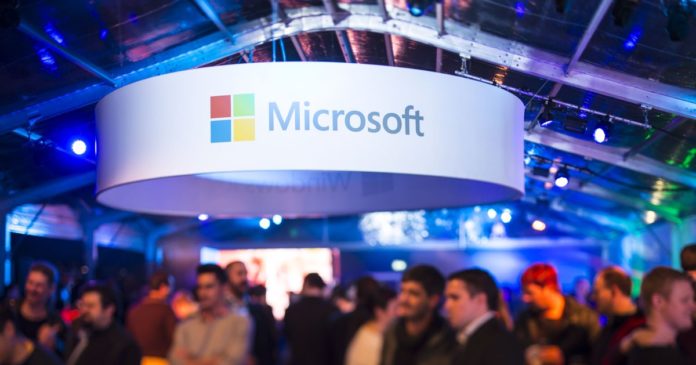
Windows 10 is one the smartest, most consistent and well-thought-out Windows updates in a decade and it pains me to see people rejecting an operating system that would likely improve their digital lives.
But there’s also a thing called free will and people have a right to just say no. And when they do that, you have to accept their decision and move on. Eventually, people usually make the right call or realize that holding onto aging technology is actually hurting them in other ways.
There’s no question Microsoft wants everyoneto upgrade to Windows 10 it hopes to have a billion installs by 2018. That’s why they made it so easy, offering free upgrades to all Windows 7 and 8.1 users. (Those upgrades cease to be free, by the way, on July 29.)
However, a free upgrade doesn’t mean much to you if you do not want to upgrade. Yes, upgrading to Windows 10 is a good idea for most, but we all know that some people have no interest in the new, and often with good reason. Perhaps they’re running old hardware that can’t run Windows 10 without problems or, more likely, they have legacy software and systems that are incompatible with it.
When a California travel agent ended up with a Windows 10 installation that, she told The Seattle Times,she never authorized, it made her computer all but unusable and almost sabotaged her business.
She sued, won, and Microsoft was forced to hand her $10,000 for her troubles. Despite the judgment, the Seattle-based software giant admitted no wrongdoing. Yet it clearly did something wrong in its original implementation of the upgrade process.
A break with tradition
Soon after Microsoft released Windows 10 last year, it began prompting Windows 7 and 8.1 users to upgrade. The large pop-up window, reproduced here from Microsoft’s own Windows 10 support site, looks like any other Windows operating system dialogue box.

The old Microsoft Windows 1-0 Upgrade dialogue box.
Image: microsoft
In the far left upper left corner is a static Windows logo and “Get Windows 10.” Opposite it, on the right side, is the traditional Window minimize icon and, next to that, a white “X” on a red button. That button, that “X”, should mean close without taking any action. That’s what it means invirtuallyall other Window’s dialog boxes.That’s what it has meant since at least Windows 95, probably earlier, and dialogs in most other OSes work the same. In fact, onecouldargue thatMicrosoftinvented this particular interfacemetaphor.
Here’s a look at a classic Windows 95 dialogue box. Note the minimize and close icons.

Windows 95
Image: Microsoft
The red “x” in the Windows 10 Upgrade Notification box, however, broke Microsoft’s own interface rules a fact Microsoft cops to in theWindows10 Support Page:
This notification means your Windows 10 upgrade will occur at the time indicated, unless you select either Upgrade now or Click here to change upgrade schedule or cancel scheduled upgrade. If you click on OK or on the red X, youre all set for the upgrade and there is nothing further to do.
In this one-of-a-kind Windows dialogue box, “X” somehow adopted the same meaning as the “OK” button. The only way to stop the upgrade was to select “Click here to change upgrade schedule or cancel scheduled upgrade.”
To be fair to Microsoft, that information and link is pretty much dead center in the dialogue box. But to be fair to users, they’ve been trained by Microsoft (and others) to use dialog boxes in a pretty specific way. Changing the meaning and action behind that “X” is something porn pop-up window programmers do. Closing one window is not a signal for them to stop, it’s a message telling them to open more and more.
Did the California travel agent encounter this box and think she had dismissed the upgrade by clicking the red “X” (probably without even reading) when instead she had just given Microsoft tacit approval to perform the upgrade? Maybe.
As I said, Microsoft never admitted wrongdoing, but in the wake of the travel agent’s lawsuit, it is changing how this dialog box works specifically making the red “X” close the window with no further action.

The Windows 10 Upgrade dialogue box.
Image: microsoft
Microsoft provided Mashable with this statement from Microsoft Windows lead Terry Myerson:
We started our journey with Windows 10 with a clear goal to move people from needing Windows to choosing Windows to loving Windows. Towards this goal, this week well launch a new upgrade experience for millions of PCs around the world. The new experience has clearer options to upgrade now, choose a time, or decline the free offer. If the red-x is selected on this new dialog, it will dismiss the dialog box and we will notify the device again in a few days.
When I discussed this turn of events with Tech Editor Pete Pachal, he wondered aloud if Microsoft might fire someone over this. However, I don’t just one person is responsible. Theupgradedialogueboxes were carefully designed (there’s even asecond confirmationbox that also breaks the red-X-means-closerule). This was likely a grouptask, a conscious effort to nudgepeoplea little harder in the direction of the new.That was clearly a larger mistake that ultimately sits in Myerson’s lap.
I understand whyMicrosoftdid it. It was trying to avoidthe situation it faced with Windows XP (and even Windows 95). Years after release, people were still running this OS (and other, even older ones)on antiquated PCs, systemsMicrosoft wasforcedto continue tosupport until it finally said no more.
Gettingeveryonetechnically on the same page is a beautiful dream, but ignores the reality ofbusiness, techmigrationand legacy systems. Users don’t march in lockstep from one thing to the next, andno amount of engineering or sleight-of-hand is going to change that.
An X is an X is an X.
Have something to add to this story? Share it in the comments.
Read more here: http://mashable.com/







